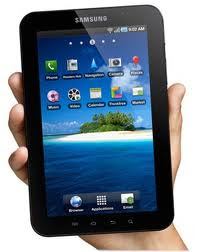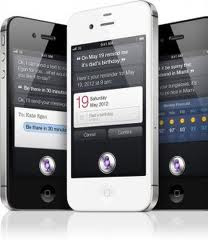Let's be clear about one thing: there is no "perfect" camera. What you're looking for is a camera that will do most of what you need, do it well, and make shooting enjoyable. Anything beyond that is a big bonus.
Why do I stress that? Because if you really go searching for the perfect camera, you'll end up with purchase paralysis, and miss lots of great photo opportunities along the way. My corollary to Chase Jarvis' maxim "The
best digital camera is the one that's with you": The best camera is the one you have now. Because the one you don't have yet while you dither in decisionlessness is useless.
You also don't want to get hung up on making sure you've got the "best" in a particular class. The truth is, one camera rarely bests the rest on all four major critera--photo quality, performance, features and design. (You may have noticed how few Editors' Choice awards we give for cameras. That's partly why.) At least not at a friendly price. You want something best for you. And that may mean, for example, that it doesn't produce stellar photo quality, or at least photos that pixel peepers think are stellar quality.
A note on photo quality: This is where questions of good, better, best tend to get controversial. First, not everybody sees the same things. No two sets of human optical systems/brains are identical, which means we all have different perceptions of tonal range, color tone and accuracy, and sharpness--almost every aspect that defines image quality. Unless you're a professional worried about being able to produce scenes with extremely high-contrast tonal ranges, colors that are hard to reproduce, the ability to shoot in very low light, and so on, it doesn't really matter how good a camera's numbers are. That's why it's essential to look at photo samples. You're looking for photos that have qualities that appeal to you, not to the reviewer. But there are some basics to observe when looking at the samples. Do look at them at 100 percent; don't base your judgment on how they look on the camera's LCD, or how they look at small sizes. Everything looks good that way. But don't get hung up on every little artifact you can make out at 100 percent, either, especially if you never plan to retouch them.
What are you replacing and why? is the most important question you need to answer, and surprisingly where a lot of people get lost. If you've "narrowed down" your list to four completely different cameras, then you haven't asked yourself this question--or haven't committed to the answer. And don't
buy a camera as a gift unless you can accurately answer this question for the potential recipient. Answers to this generally fall into four categories:
1. I have nothing and want something. Buy something really cheap that you won't mind replacing as soon as you figure out what you'll really be using it for. Either that, or temporarily borrow a friend's camera. If you don't know how to use a camera, or how to use a digital camera, or don't feel comfortable with one, you won't be able to make an intelligent decision about what you want or need. Once you've shot with a camera for a little while, then come back and consider the other choices here.
2. I need to replace a broken camera. If you like the camera you broke, then try to replace it with something similar. This can be tricky, especially if the camera was very old; some features, like optical viewfinders on point-and-shoots, have nearly disappeared. Nor can you really go by product-naming conventions, because manufacturers play fast and loose with the product lines. My suggested approach is to match the lens focal length, control layout, and dimensions and weight spec with another from that same manufacturer to get a rough approximation of the same camera. If that fails, then follow the advice under "I want something better than my current camera."
3. I want something different than my current camera. By "different" I'm referring to a lateral move. You're happy with its photo quality and performance, but you want more flexibility as to where you can shoot from (longer zoom range or wider angle of view), more control over exposure or areas of focus (manual features), wireless uploading or geotagging support, an optical or electronic viewfinder, interchangeable lenses, a hot shoe, and so on. It may also mean you're looking for a change in design; smaller or bigger, or with a physical mode dial. (If you want different and better, use the criteria under "better" first, then use the "different" criteria to narrow your choices.) This is where you have to prioritize and stick with it. Choose the top four things you want and list them in priority order.
This is critical because when you start to get distracted by shiny tinies or amazing prices, the list will rein you in. It will also reinforce your sense of trade-offs for physically incompatible features. You can want a 36x zoom lens in a pocket-size camera, but you're not going to get it; as you add physical features, size increases. So check your list for inherent contradictions. If a stalker lens is higher on your list than pocketability, decide which is more important and where you might make concessions. Pick the three most important features or characteristics and toss out all the cameras that don't meet those criteria. Can you afford any from the remaining pool? If not, you'll have to drop the least important feature. If you've got more than three cameras left within your budget, expand a feature down the list.
4. I want something better than my current camera. If this means you want better photo quality, take a long, hard look at your photos and analyze exactly what you don't like. If you're not sure where to start, take a look at our image artifact examples at the bottom of that page. One thing to consider is that if you're seeing problems with the images from your current camera it might be your settings, especially if you're shooting on fully automatic. Before giving up on it, see if your camera has some semimanual settings--this guide will give you more information on those--that might give deliver better quality.
If your need is for more speed, that can be a little trickier; it requires that you have some sort of objective baseline on your current camera so that you can find a faster model. The easiest way to do this is to search for our review of your current model; unless it's reeeeally old, or if we never reviewed it, we should have some performance results posted for it. You can also try to roughly measure its basic performance yourself with an online stopwatch, like the one at online-stopwatch.com (make sure it's maximized it to full screen). Focus and shoot the running stopwatch for two sequential shots. Keep doing that until you feel you've got the fastest possible time that's also in focus. Then look at the photos of the times and subtract the second from the first. That's an approximation of our shot-to-shot time. While none of these results will exactly represent your shooting experiences, at least it gives you some basic measure of what to compare against. You may also discover in the process that it's you and not your camera that's slow.
If you're still convinced that money needs to be spent, then determine your budget first. Unlike searching based on features, better photo quality and performance can spiral upward in price quickly, so you need go into the decision with a firm upper bound. Start searching in your price range, looking for cameras with subratings for 8 on photo quality and/or performance (Or if you're looking at another reviews site, whatever their ratings criteria are for "excellent"). Look at the performance numbers and photo samples with comparisons to your current model in mind. If you can't find anything in your price range, you may need to increase your upper bound or lower your standards. Iterate through that until you've found at least one model that satisfies you.
Narrow your choices By now you should have a short list. Go forth and read the user reviews on the cameras, looking for useful, verifiable information, such as comments about
battery life or design glitches to watch out for. For the reasons indicated above, I tend to discount comments about photo quality unless they're accompanied by full-size image samples. Basically, you just want to make sure a camera isn't universally reviled. Don't get obsessed by the things other people hate; if it doesn't matter to you if the camera lacks a mode dial, don't let the complainers get to you. And at this point, you don't really want to drop anything from your list unless a deal-killer problem pops up here. You might be willing to make some trade-offs if you can find a good price.
Try before you buy Once you've got your list of three or fewer cameras, seek them out and lay hands on them. Find them in a store, borrow from a friend, or in the case of more expensive equipment, you many want to rent them for a few days. Do you like the way the controls operate? Are the features you'll be using most frequently easy to access? Is it too big? Too small? Too plasticky? A hideous color? If you have a strong negative reaction to any of the designs, drop it from your list, and perhaps even make a written note of it to reinforce how much you disliked it when you're lured by the fact that it cost $100 less than the others. It doesn't matter how little it costs if you're not going to use it.
Compare prices This can get tricky, as the most aggressive prices are usually from places--both online and brick-and-mortar--that you've never heard of. My personal rule of thumb is to not buy at the cheapest price I can find, but a price at the lower end of the range. If you've never heard of the store or have doubts about it, search online for complaints (or kudos). If you still have more than one choice and you're really indifferent between two or more models, buy the cheapest one. At this point, obsessing about which one might be slightly better is pointless and paralyzing. And in two months, you won't care.
Related articles:
Digital Cameras Buying Tips: How to Choose the Best Cameras


















